| Columns Retired Columns & Blogs |
ASR Emitter II Exclusive integrated amplifier Measurements
Sidebar 3: Measurements
The ASR Emitter II Exclusive's battery power supply was fully charged when I began my testing. After I'd preconditioned the amplifier with both channels running for an hour at one-third maximum power into 8 ohms, the heatsinks were only just too hot to touch (around 65°C), and the THD+noise percentage was 0.0164%—not significantly different from the figure of 0.0137% with the amplifier cold. The voltage gain into 8 ohms with the volume control set to "61," the normal highest level in "Energy Saving Mode", was 27.2dB. Setting the volume control to its maximum of "76" in full-power mode resulted in a voltage gain of 41.9dB. This was for singled-ended drive. For balanced drive, the maximum gain was 6dB lower, due to the use of the balanced/unbalanced conversion circuitry. The ASR was noninverting through all of its inputs, and its unbalanced input impedance was 10k ohms at all frequencies, including via the Direkt jack.
The ASR's output impedance was very low: <0.08 ohm across the audioband (including the series impedance of 6' of multistrand speaker cable). As a result, the modification of the Emitter II's frequency response due to the Ohm's Law interaction between this impedance and that of the speaker was also very low (fig.1, top solid trace at 2kHz). Fig.1 also reveals that the ASR has a very wide small-signal bandwidth—the –3dB point lies at almost 200kHz—though this decreases into lower impedances. Also shown is a residual peak at around 130kHz, perhaps an indication of a parasitic resonance somewhere in the circuit, which adds a very small overshoot to the shape of a 10kHz squarewave (fig.2). Channel separation (not shown) was good rather than great, at 70dB at 1kHz.
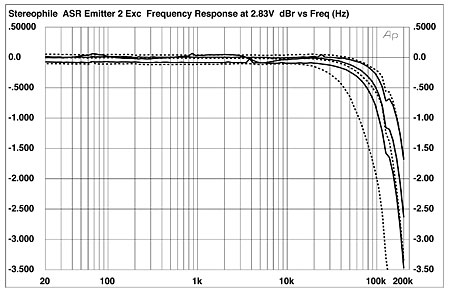
Fig.1 ASR Emitter II Exclusive, frequency response at 2.83V into (from top to bottom at 2kHz): simulated loudspeaker load, 8, 4, 2 ohms (0.5dB/vertical div., right channel dashed).
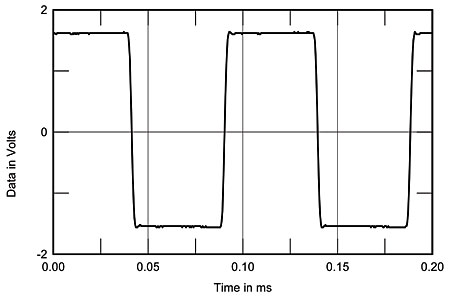
Fig.2 ASR Emitter II Exclusive, small-signal 10kHz squarewave into 8 ohms.
The Emitter II's unweighted, wideband S/N Ratio, taken with the volume control at "76" but with the input shorted, was 78.2dB ref. 1W into 8 ohms. Reducing the measurement bandwidth to 22Hz–22kHz improved the figure to 89.9dB, while A-weighting improved it further, to 92.4dB.
Testing the Emitter II Exclusive's power-delivery at clipping was an exercise in frustration, as the amplifier's protection circuitry would turn the amplifier off before it actually clipped, and flash a red warning light on the front panel. The protection circuitry had to be reset by turning the amplifier fully off. There also appeared to be some kind of "history" effect, in that once the amplifier had shut itself off, it would not allow as much power to be delivered to the test load the next time I tried to clip it. So bear all of that in mind when you look at the traces in fig.3, which plots the ASR's THD+N percentage against output power into loads ranging from 8 ohms down to 2 ohms. The bottom trace was taken with both channels driven into 8 ohms; it stops at 285W (24.5dBW), which is where the amplifier shut down, not where it clipped. Subsequently tested with both channels driven into 4 ohms (middle trace), the ASR shut off at 128W. But with one channel driven into 2 ohms (top trace), the Emitter II didn't shut itself off until it was putting out 830W (23.2dBW).
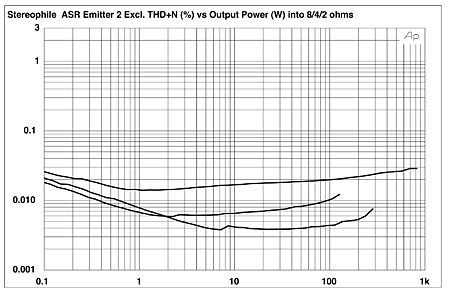
Fig.3 ASR Emitter II Exclusive, distortion (%)vs 1kHz continuous output power into (from bottom to top at 10W): 8, 4, 2 ohms.
The shape of the traces in fig.3 suggests that the Emitter II's distortion lies under the noise below output powers of 10W or so. I therefore examined how the THD+N percentage changed with frequency at 11.5V output, equivalent to 16.5W into 8 ohms. The results are shown in fig.4, which shows that while the THD is very low at low and midrange frequencies, it does rise with both increasing frequency and decreasing load impedance, though not to any level that might be thought to be subjectively significant.
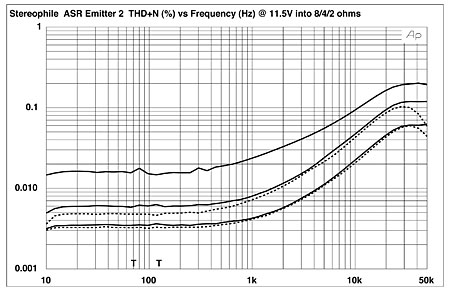
Fig.4 ASR Emitter II Exclusive, THD+N (%) vs frequency at 11.5V into (from bottom to top): 8, 4, 2 ohms (right channel dashed).
Fig.5 suggests that the distortion's harmonic content is predominantly low-order, although a peculiar discontinuity in the distortion waveform at the start of each sinewave cycle is more pronounced into low than into high impedances. This is examined somewhat differently in figs.6 and 7, which show the spectra of the ASR's output while it drives a 50Hz tone at high levels into 8 and 4 ohms, respectively. The difference made by doubling the output current at low frequencies appears mainly to be the introduction of third-harmonic distortion to accompany the second harmonic, though the levels of both harmonics are still very low, at –86dB (0.005%). But at higher frequencies at high powers, the fifth, seventh, and ninth harmonics all make more of an appearance (fig.8).
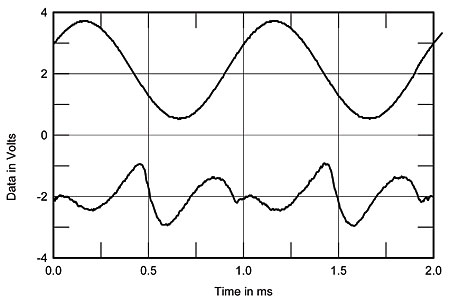
Fig.5 ASR Emitter II Exclusive, 1kHz waveform at 32.5W into 4 ohms (top), 0.0078% THD+N; distortion and noise waveform with fundamental notched out (bottom, not to scale).
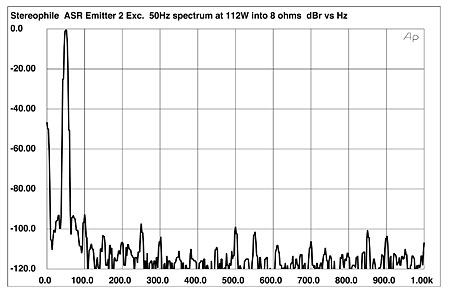
Fig.6 ASR Emitter II Exclusive, spectrum of 50Hz sinewave, DC–1kHz, at 112W into 8 ohms (linear frequency scale).
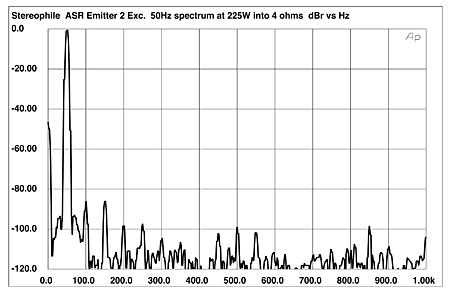
Fig.7 ASR Emitter II Exclusive, spectrum of 50Hz sinewave, DC–1kHz, at 225W into 4 ohms (linear frequency scale).
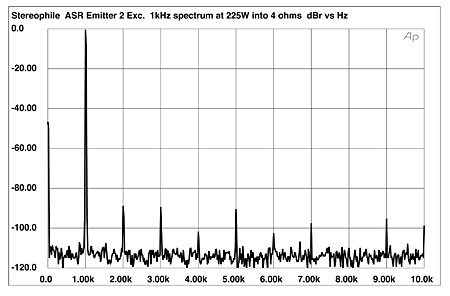
Fig.8 ASR Emitter II Exclusive, spectrum of 1kHz sinewave, DC–10kHz, at 225W into 4 ohms (linear frequency scale).
Intermodulation distortion was very low, even at very high powers into 4 ohms (fig.9). This graph, incidentally, was taken with one channel driven about an hour after the THD-vs-power curves were taken. You can see that the Emitter II's protection circuitry had now allowed me to drive the amplifier at a higher level into 4 ohms than it had before (555W vs 128W).
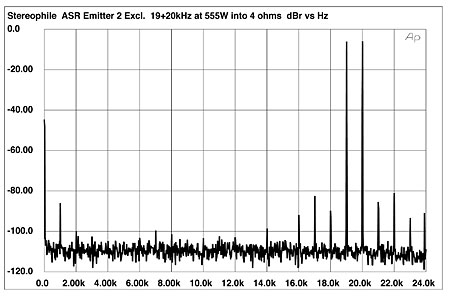
Fig.9 ASR Emitter II Exclusive, HF intermodulation spectrum, DC–24kHz, 19+20kHz at 555W peak into 4 ohms (linear frequency scale).
With its three separate power supplies and its tethered power cables, the ASR Emitter II Exclusive was awkward to set up in my test lab. But its measured performance is, overall, beyond reproach, and when I auditioned it in Michael Fremer's system prior to taking it home with me, the sound of his big Wilson speakers had an ease and a dynamic sweep that I had not experienced before from his system. This unusual amplifier is definitely a high-end contender!—John Atkinson
- Log in or register to post comments



































